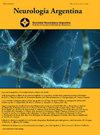使用多层感知器预测阿尔茨海默氏症:诊断准确性的性别差异
Q4 Medicine
引用次数: 0
摘要
阿尔茨海默氏痴呆症是老年人认知能力下降的主要原因。尽管基于人工智能的预测模型在改善早期诊断方面具有巨大潜力,但很少有人考虑到其有效性的性别差异。目的分析多层感知器对阿尔茨海默氏症生理性别的诊断准确性。材料和方法对373名参与者的二级数据库进行横断面研究。采用多层感知器型神经网络,变量为:年龄、性别、受教育程度、社会经济地位、总颅内容积(eTIV)、归一化白质体积(nWBV)和最小精神状态检查(MMSE)。使用AUC(曲线下面积)评估性能,使用分类表评估诊断准确性。结果在感知器训练中,女性表现出较低的交叉熵误差(13.074比20.461)和不正确预测百分比(5%比9%)。在测试中,他们继续保持较低的交叉熵误差(7.888对16.500)和不正确预测的百分比(6.80%对20.80%)。AUC在女性中表现出较好的预测能力(0.992比0.947)。女性的分类率也更高,训练和测试的总体准确率分别为95%和93.20%,而男性的分类准确率分别为91%和79.20%。结论生物性别影响阿尔茨海默病预测模型的有效性。研究结果强调了在开发阿尔茨海默病诊断工具时考虑生物学和社会因素的重要性,这可以提高治疗和预防的个性化。本文章由计算机程序翻译,如有差异,请以英文原文为准。
Predicción de demencia de Alzheimer mediante perceptrón multicapa: diferencias de género en la precisión diagnóstica
Introduction
Alzheimer's dementia is a major cause of cognitive decline in older adults. Although artificial intelligence-based predictive models have great potential to improve early diagnosis, few consider gender differences in their effectiveness.
Objective
To analyze the diagnostic accuracy of the multilayer perceptron in predicting Alzheimer's dementia according to biological sex.
Materials and methods
A cross-sectional study of a secondary database of 373 participants. Multilayer perceptron-type neural networks were used, the variables were: age, sex, educational level, socioeconomic status, eTIV (total intracranial volume), nWBV (normalized white matter volume) and MMSE (Mini-Mental State Examination). Performance was assessed using AUC (Area Under the Curve) and diagnostic accuracy using classification tables.
Results
In perceptron training, women presented a lower cross-entropy error (13.074 vs. 20.461) and percentage of incorrect predictions (5% vs. 9%). In testing, they continued with a lower cross-entropy error (7.888 vs. 16.500) and percentage of incorrect predictions (6.80% vs. 20.80%). The AUC reflected an excellent predictive capacity slightly higher in women (0.992 vs. 0.947). Classification rates were also better in women, with an overall accuracy of 95% in training and 93.20% in testing, compared to 91% and 79.20% in men.
Conclusions
Biological sex influences the effectiveness of predictive models for Alzheimer's dementia. The results underline the importance of considering biological and social factors when developing diagnostic tools for Alzheimer's, which can improve the personalization of treatment and prevention.
求助全文
通过发布文献求助,成功后即可免费获取论文全文。
去求助
来源期刊

Neurologia Argentina
Medicine-Neurology (clinical)
CiteScore
0.50
自引率
0.00%
发文量
34
期刊介绍:
Neurología Argentina es la publicación oficial de la Sociedad Neurológica Argentina. Todos los artículos, publicados en español, son sometidos a un proceso de revisión sobre ciego por pares con la finalidad de ofrecer información original, relevante y de alta calidad que abarca todos los aspectos de la Neurología y la Neurociencia.
 求助内容:
求助内容: 应助结果提醒方式:
应助结果提醒方式:


